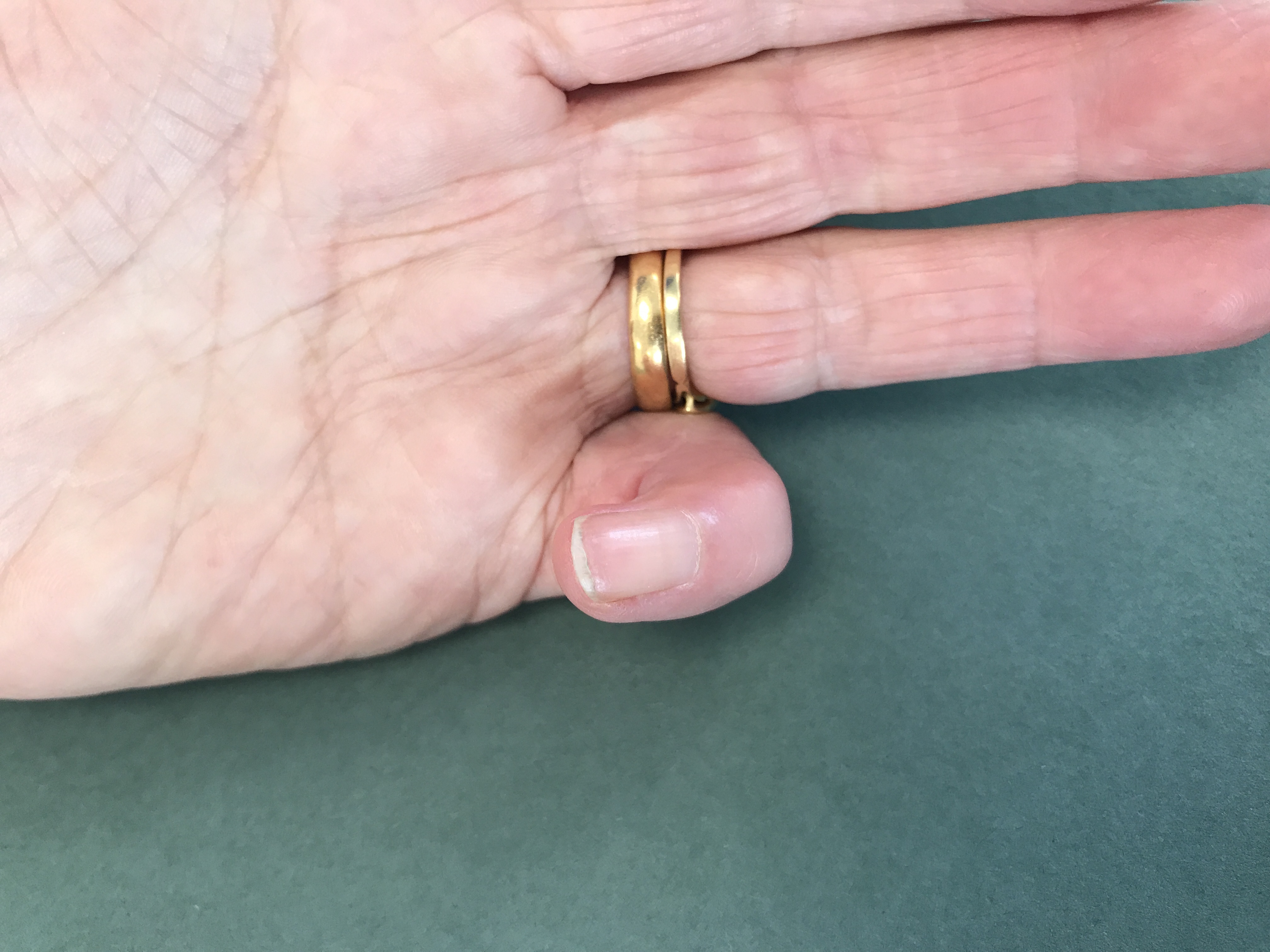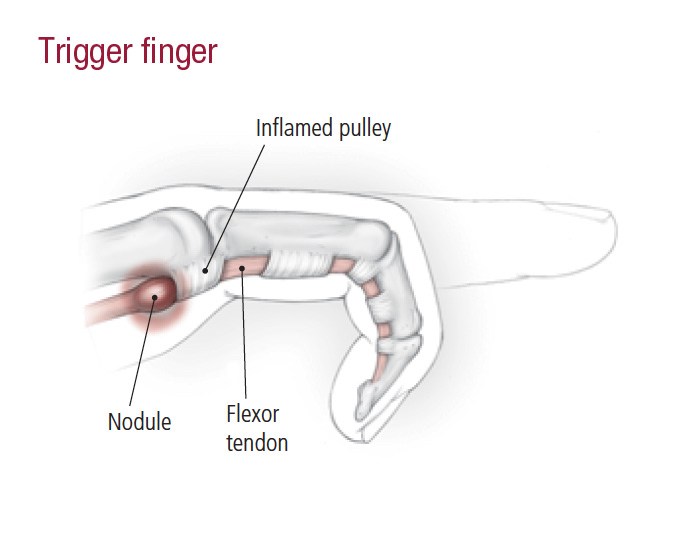Trigger Finger

Trigger finger is a condition in which your finger or thumb ’catches’ or gets locked in place when you bend it. It can be congenital in children in the thumb but can some times resolve spontaneously.It is a Stenosing Tenosynovitis more common in females associated with inflammatory arthropathies and diabetes. It is commonest at A1 pulley area.
Symptoms
Symptoms of trigger finger can include the following.
- A painful catching or popping sensation when you bend and straighten your finger.
- Your finger getting stuck (locked) in a bent position – you may be able to pull it straight with your other hand.
- You may be able to feel a sore lump in your palm at the base of the affected finger.
- Stiffness in your finger, which may be worse first thing in the morning.

Causes
Trigger finger is caused by inflammation of the tendon that bends your finger, causing it to catch on the tendon sheath. It’s not always clear exactly why some people develop trigger finger. But intensive or repetitive manual activities that involve your fingers, or that put pressure in the palm of your hand, can sometimes set it off.
There isn’t much you can do to prevent trigger finger. Trigger finger is associated with other health conditions, including:
- diabetes
- inflammatory conditions, such as rheumatoid arthritis – an inflammatory condition that can cause you to develop nodules (bumps) in your tendons
- an underactive thyroid gland (hypothyroidism)
- amyloidosis – a group of diseases in which deposits of abnormal proteins (known as amyloid) build up in one or more of your organs
- trisomy 13
- DeQuvervains
- Gout
Trigger finger can coexist with other conditions affecting your hand and wrist such as Dupuytren’s contracture and carpal tunnel syndrome.
Differential Diagnosis
- Tendon rupture
- Joint deformity
- Giant cell tumour of tendon sheath
- Loose body in MCPJ
- Absent Extensor
- Congenital contracture
Examination
- 4 grades
- Children under 2 30% bilateral
- Under 6 months age 30% resolve spontaneously
- 6-30 months only 13% get better
- Beware of the Dupuytren’s nodule
Grading
There are four grades of trigger finger
- Grade I "Pre-triggering-pain; tenderness over the A1 pulley; history of catching but not demonstrable on physical examination".
- Grade II "Triggering, active; demonstrable catching, patient can actively extend".
- Grade III "Triggering, passive; demonstrable catching requiring passive extension or inability to actively flex".
- Grade IV "Contracture; demonstrable catching, with a fixed flexion PIP joint contracture".
Management
- US/MRI
- Rest
- Splintage
- Injections guided or otherwise
- Surgery open or percutaneous release
